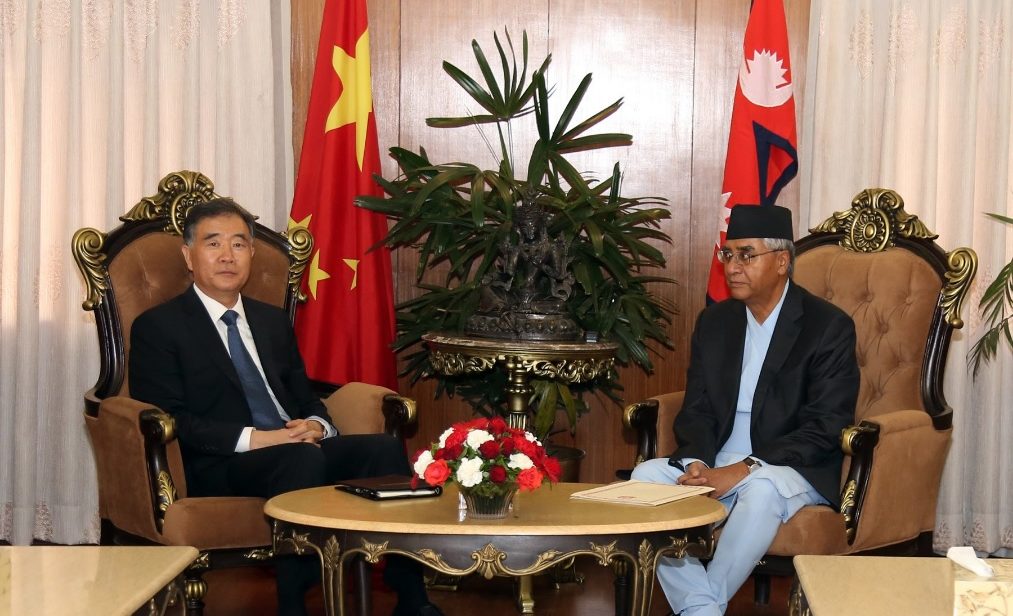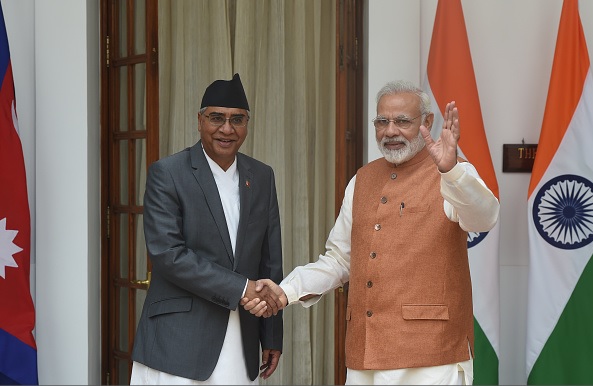
Since establishing formal diplomatic ties in 1955, Nepal and China have shared largely cordial relations. However, the relationship has strengthened significantly after Nepal abolished its constitutional monarchy in 2008 and opened up more to the world but more particularly, since the Gorkha earthquake in 2015. Meanwhile, India-Nepal relations have soured, with the downturn in bilateral relations exemplified by the Nepalese government accusing New Delhi of tacitly supporting a blockade led by the Madhesi people for four months in 2015, an ethnic group with close ties to India. The blockade led to dire shortages of fuel and other necessities in Nepal, an experience that may help explain Kathmandu’s increasing closeness to Beijing in an effort to balance its decades of dependency on New Delhi.
These developments demonstrate that Nepal’s foreign policy has now reached an inflection point. How Kathmandu chooses to play its cards in the next few years will prove critical to the regional balance of power in South Asia. Nepal could reaffirm its traditional alignment with India or break from precedent and fortify its ties with China. However, the more prudent strategy may be to practice strategic ambiguity and play one great power against the other while gaining economic benefits from ties with both.
China’s Strategic Motivation for Ties with Nepal
The deterioration of bilateral relations between India and Nepal presents a strategic opportunity to Beijing. China takes considerable interest in Nepal given that the Himalayan nation borders the Tibetan Autonomous Region (TAR) of China, where Beijing has worried about maintaining stability for decades. An estimated 20,000 Tibetan refugees have settled in Nepal following the 1959 Tibetan uprising and China sees these refugees as a threat to its sovereignty and stability. As happened in Kathmandu in 2008, China is concerned about the unrest that these refugees can create by protesting China’s suppressive rule in TAR—Beijing worries that such protests have the potential to attract international attention that could damage its global standing or inspire other domestic ethnic groups to resist the Chinese state.
Along with concerns over Tibet, Beijing may also be interested in courting the cooperation of the Nepali government due to the country’s longstanding closeness with New Delhi, the region’s preponderant power. From China’s standpoint, the 2015 blockade was an opening to wean Nepal away from an overdependence on India for its foreign policy and economic growth.
Economic Engagement
With these strategic concerns in mind, the primary method by which China has demonstrated its commitment in Nepal is through economic engagement. China is Nepal’s second largest trading partner after India, though Indian imports still dwarf Chinese imports at 58 to 14 percent respectively. China has also emerged as the largest source of FDI in Nepal while Indian investments plunged 76 percent in the period July 2016 to January 2017. As of March this year, Chinese firms have also pledged $8.3 billion to finance hydropower, smart grid, and roadways in Nepal, among other projects.
China is also set to exert greater influence over Nepal in the realm of regional connectivity. As evidenced by the blockade, Nepal has been overly reliant on southern border crossings with India for the majority of its trade. However, China’s landmark Belt and Road Initiative (BRI) could change this status quo and potentially spur an economic renaissance in Nepal. In May, Nepal signed on to the BRI, which could link it to markets in Central Asia and Europe.
Defense and Security Cooperation
While economic cooperation is accelerating China-Nepal ties, security concerns over Tibetan refugees continue to underpin Beijing’s engagement with the Himalayan kingdom. For example, in July, China granted Nepal a training center for the National Armed Police Force (APF), which was constructed with Chinese grant assistance. This is significant because the APF are deployed on the Nepal-Tibet border. As such, funding an APF training facility could grant China influence in how the APF implements border security and check the infiltration of Tibet refugees and activists into Nepal. Likewise, in October 2016, China pledged assistance to modernize the Nepal Army (NA).
The capstone of Nepal-China defense cooperation, however, was the April 2017 joint military exercise called Sagarmatha Friendship 2017. Though Nepal has conducted joint bilateral military exercises with both India and the United States in the past, this exercise was the first between China’s People’s Liberation Army (PLA) and the NA. Such joint exercises carry significance for they can increase understanding between nations, build personal and institutional links between military forces, and reinforce political, economic, cultural linkages.
More recently, during the Doklam stand-off between India and China, Chinese Vice Premier Wang Yang made a trip to Kathmandu to purportedly press the Nepali government to maintain neutrality during the dispute. Kathmandu seems to have complied with this pressure, another indication of the changing contours of the Nepal-China relationship.

Road Ahead
China’s strategic objectives will likely continue to make progress in Nepal given the general slump in India-Nepal bilateral relations recently. Following the bruising experience of the 2015 blockade combined with the palatable resentment in Nepal due to Indian interference in the country’s domestic politics, China presents an attractive alternative to Nepal’s fraught relationship with India.
Yet, China may find longstanding India-Nepal ties difficult to erode. India considers South Asia its domain and is perhaps especially protective of Nepal where New Delhi brokered a peace agreement between the Nepali government and Maoist insurgents in 2006. In this context, the challenge for China will be expanding its clout in Nepal as the Indian strategic community makes attempts to win back Nepal’s trust. In the past few months, New Delhi has demonstrated its commitment to pulling Kathmandu back into its orbit as evidenced by Nepali Prime Minister Sher Bahadur Deuba’s recent trip to New Delhi, Indian Prime Minister Narendra Modi’s unscheduled, one-on-one meeting with Deuba, and the inking of several bilateral agreements pertaining to development between the two countries.
China’s Nepal policy is driven by its domestic security concerns related to Tibetan stability and regional concerns related to containing India. In this context, Nepal has adopted a domestic “hedging” strategy. Short of Nepal consenting to align with China and counterbalance India, China may become frustrated by Nepal’s ambiguity and continued partnership with India. On the other hand, regional tensions may grow if India feels its traditional partner is wavering in favor of Beijing. Given this complicated context, Nepal should play the role of a delicate balancer that maintains equal distance from both its northern and southern neighbors to advance its own growth and development.
Editor’s note: This is the third installment of South Asian Voices’ new six-part series, China in South Asia. In this series, our contributors Fatima Raza from Pakistan, Saimum Parvez from Bangladesh, Avasna Pandey from Nepal, Kithmina Hewage from Sri Lanka, Ahmad Shah Angar from Afghanistan, and Pushan Das from India explore China’s strategic and economic goals in their respective countries, the challenges China may face in implementing those goals, and how China’s engagement will affect the regional balance of power in South Asia. Read the entire series here.
Editor’s Note: Click here to read this article in Hindi
***


